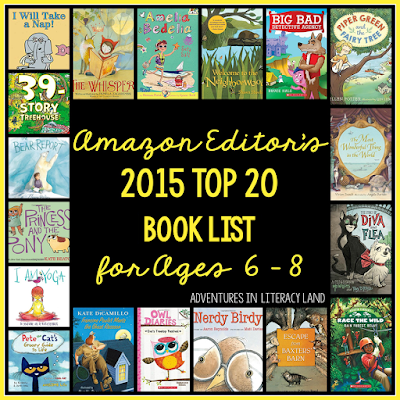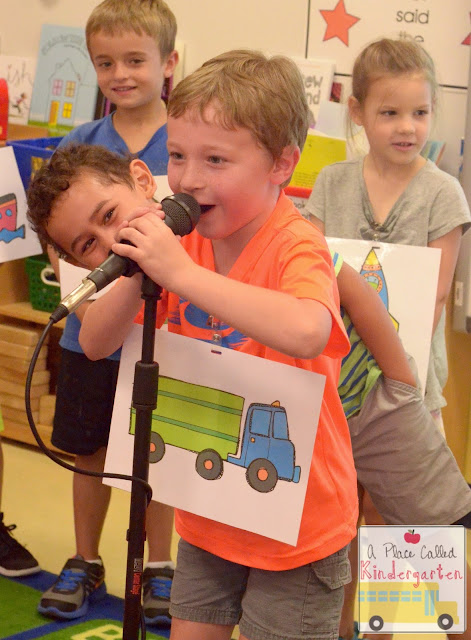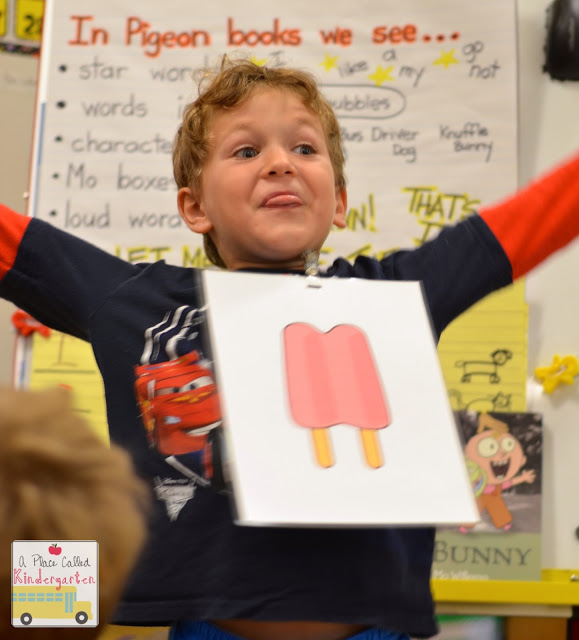In order to teach Kinders how to write a complete sentence, they also need to understand what a complete sentence is. So often, students at this age speak in single words or phrases. In my writing center, I combine these two skills and embed my sight word lessons into it at the same time!
While planning the order in which I teach sight words, I always try to make sure that we can use them to build sentences. For example, the first sight words that I teach are "I" and "see." This way we can use our new sight words to write a sentence, "I see ___."
Here is my list of the sight words that I use and the sentences that we create with them!
So on Monday, I introduce our new sight words. We even practice reading a few sentences with these sight words in them.
 On Wednesday, we do a shared writing. I give each student a word card to help them with building our sentences. I have several word cards with different themes that are stuck in a folder with Velcro. This way students can manipulate them when we get to center time. Once each student gets a card, I have them take turns using the word in a complete sentence using our new sight words. I write them down as they tell me. We discuss spacing, capital letters, periods, etc, all while writing the sentences. Once every student has a had a turn, we practice reading everything that we have written.
On Wednesday, we do a shared writing. I give each student a word card to help them with building our sentences. I have several word cards with different themes that are stuck in a folder with Velcro. This way students can manipulate them when we get to center time. Once each student gets a card, I have them take turns using the word in a complete sentence using our new sight words. I write them down as they tell me. We discuss spacing, capital letters, periods, etc, all while writing the sentences. Once every student has a had a turn, we practice reading everything that we have written.On Friday, each student writes their own sentence using our sight words and a word card that they have chosen. They illustrate their picture and then we put them together into a class book. Our book goes in our library so that our kids can read their own writing during library time!
The following week, during writing center, our students will practice building their sentences with word cards, writing them, and illustrating them! They have gotten so good at sight words and writing with this center!

































